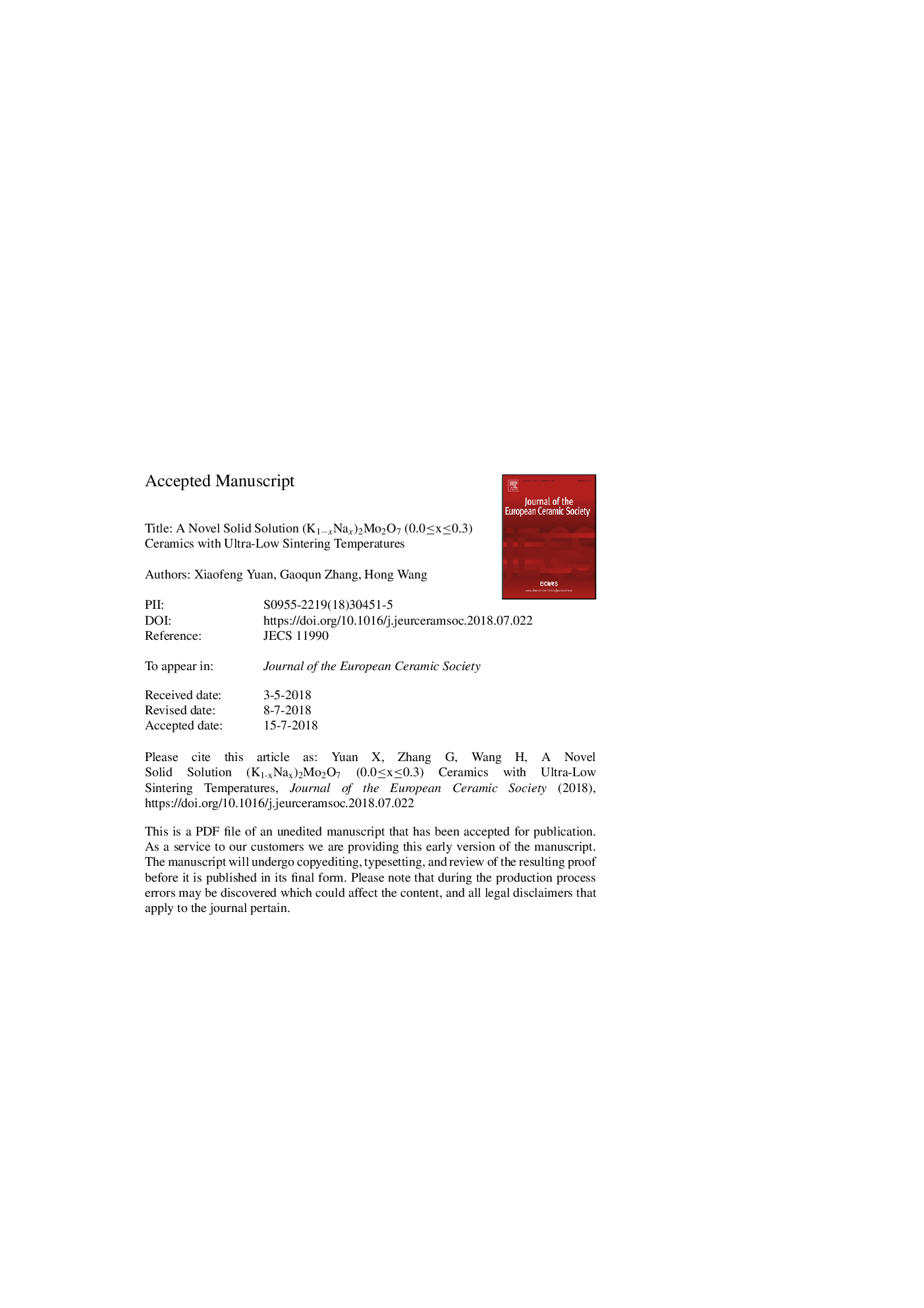| Article ID | Journal | Published Year | Pages | File Type |
|---|---|---|---|---|
| 8948543 | Journal of the European Ceramic Society | 2018 | 19 Pages |
Abstract
The (K1-xNax)2Mo2O7 (0.0ââ¤âxââ¤â0.3) ceramics with ultra-low sintering temperatures were prepared by a modified solid-state reaction method. Polyvinyl ethanol (PVA) binder was replaced by ethanol and isostatic pressing technology was used, which improved the density of the ceramics effectively and avoided the side effect of the residual PVA. When xââ¤â0.3, the (K1-xNax)2Mo2O7 ceramics are with a triclinic phase and all components can be sintered well at 450â°C. The substitution of Na+ at the K-site modified the dielectric properties of K2Mo2O7 ceramic and in particular increased the QâÃâf value. Among all the components, the (K0.8Na0.2)2Mo2O7 ceramic exhibited the best microwave dielectric properties with a permittivity of 8.7, a QâÃâf value of 50 300âGHz and a temperature coefficient of â64âppm/°C. The (K1-xNax)2Mo2O7 (0.0ââ¤âxââ¤â0.3) ceramics are very potential candidates for ultra-LTCC devices and the modified solid-state reaction method is an excellent substitution for the conventional solid-state method.
Keywords
Related Topics
Physical Sciences and Engineering
Materials Science
Ceramics and Composites
Authors
Xiaofeng Yuan, Gaoqun Zhang, Hong Wang,
